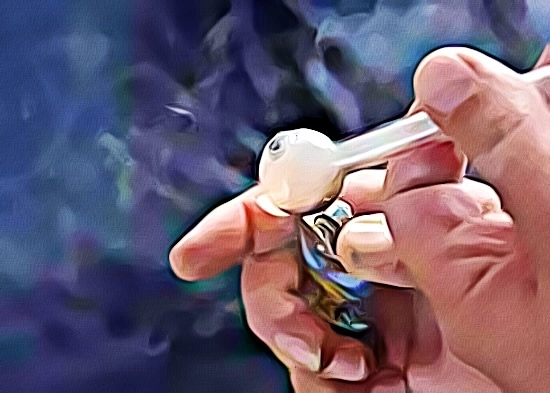Meth, also known as methamphetamine, is an incredibly addictive drug classified as a Schedule II stimulant. While it can be prescribed for medical use to treat obesity and attention-deficit or hyperactivity disorder as Desoxyn, it cannot be refilled due to its high potential to be abused.
Still, people find ways to get their hands on meth, mainly through illegally cooking it in labs. Known as illegal meth, it can be incredibly toxic because of the inexpensive ingredients found in it, such as lithium, battery acid, nail polish remover, fertilizer, and pseudoephedrine. These meth labs are hazardous since they use active ingredients to produce meth and cause reactions that may result in explosions or injury. As such, it is crucial to learn how to identify meth, know what it smells and looks like, and how to tell if your loved one is using it.
What Does Meth Smell Like?
Pure meth is odorless, so you won’t be able to smell it. However, it has a distinct bitter taste. People often mix meth with other substances that cause a foul or unpleasant smell reminiscent of cat urine, burning plastic, acetone, ammonia, or even rotten eggs. These odors can be so strong in a meth lab that they can even be dangerous to one’s health.
Depending on the materials used, meth can smell like harsh, potent chemicals. For instance, a few telling signs of a meth lab include paint smells or even an odor often associated with medical facilities, known as a “hospital smell” due to the strong chemical cleaners used. Meth labs can even smell like window cleaners because it emits a scent similar to vinegar or ammonia. Meanwhile, meth smells differently when smoked, which often produces a subtler, almost sweet aroma.
All About Meth Pipes
Many meth users consume the drug through meth pipes, which is one of the most common methods. These pipes are often long, glass cylinders with bulbous ends. Users put meth inside the pipe’s end and heat the underside with a lighter. These pipes are commonly available at gas stations, frequently containing a fake rose to disguise the product. A used meth pipe will show burn marks on the underside; if it has meth residue inside, it often looks yellowish and waxy.

Meth pipes are the most preferred way to smoke meth; however, users often improvise if they aren’t available by using available materials to make pipes. For example, some users have made pipes out of aluminum foil or aluminum drink cans. Others snort their meth through a drinking straw or an empty pen since powdered meth sticks to paper products and not to plastic.
What Does Meth Look Like?
Identifying a substance as meth is often tricky since it takes on many forms that easily resemble harmless substances. It can look like tiny pieces of transparent quartz, rock candy, rock salt, talcum powder, or even donut glaze, making purely visual identification of the drug unreliable. However, regular meth comes in powder form, whether coarse or fine. Pure meth is entirely white.
When meth takes on other colors like yellow, blue, green, or pink, that’s a sign that it was cut with other substances. It can also come in pill or tablet form. It’s important to note that meth can be mixed with alcohol or water since it completely dissolves in these liquids.
Crystal meth resembles small crystal wands or even glass shards. Sometimes, it appears as small, gleaming blue rocks, taking its color from other substances. Despite what you may see on television, only pure meth is colorless.
Instead, law enforcement professionals utilize drug kits to determine a substance’s composition and confirm it is meth. They test a suspected user’s urine or blood to locate traces of the drug, or they can mix the substance with a reagent. If it produces a blue color, it detected one of the amines used to create meth.
Signs of Meth Use
If you are worried about your loved one and suspect that they struggle with addiction to meth, you must be on the lookout for a few physical and behavioral changes. Although meth users bear different signs because they react to the drug differently, there are common changes. These include paranoia, insomnia, drastic mood swings, agitation, and a reduced appetite. This combination of symptoms may indicate meth use, so if you notice them in your loved one, you may want to seek help.
You may also observe your loved one’s mental health rapidly deteriorating not only due to meth’s effects but because they may feel ashamed of their usage. Unfortunately, this presents a vicious cycle: the worse their mental health is, the more likely they are to continue using meth. Addiction treatment professionals often call this phenomenon “co-occurring disorders,” in which one issue exacerbates another.
Unfortunately, meth’s long-term effects also impact the body. Physical signs of meth usage include dilated pupils, skin sores, rotting teeth, rapid eye movement, and burns on the lips or fingers. Another sign is called “tweaking,” in which a meth user indulges in the drug in high doses and enters a state of pseudo-psychosis. It often lasts for several days after taking the drug. As such, if you notice that your loved one is exhibiting extreme confusion and erratic behavior, this may be a sign that they are tweaking, which is notoriously difficult to hide.
Meth Sores
Meth usage can lead to meth sores on the arms, face, legs, and even on the tongue. These are open wounds that occur when a person uses meth or crystal meth. They also often experience skin problems because the drug makes them feel incredibly itchy. It causes hallucinations and feelings that cause them to think and feel that imaginary bugs are all over their skin, causing them to scratch relentlessly. They may even stop taking care of their hygiene and diet, affecting their physical appearance and making them itch further.
Meth sores tend to be red and resemble rashes, blisters, cuts, or even chickenpox. Meth face sores often look like acne. Those who smoke crystal meth develop meth mouth sores and their lips, which may look like cuts or ulcers. When these sores worsen, they produce pus and darken to a black or brown center.
It is crucial to note that meth itself does not directly cause these sores. The drug triggers hallucinations, itching, and irritation, forcing users to pick at their skin and scratch until the skin becomes so irritated that it develops these sores. They also often go days without sleeping, causing them to hallucinate and feel like something is crawling under their skin. These sensations are referred to as “meth mites” or “crank bugs.”
Conclusion
Knowing how to identify meth is crucial, especially when you suspect that your loved one uses the drug. While the drug itself is often difficult to detect because of its varying characteristics, the most reliable way—besides a drug test—is to observe changes in your loved one’s behavior. By keeping watch for these, you can help your loved one seek addiction recovery to turn their life around.
Sources:




